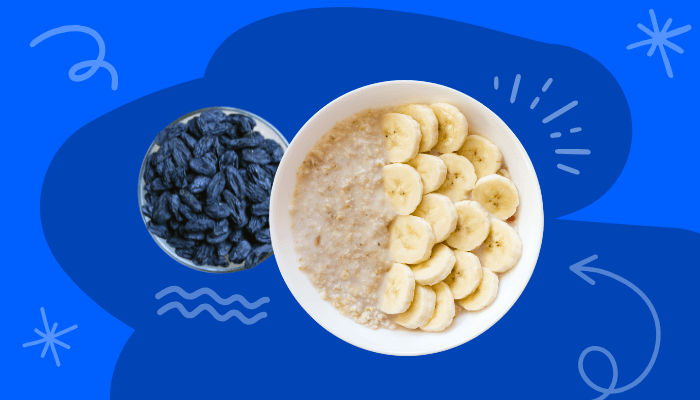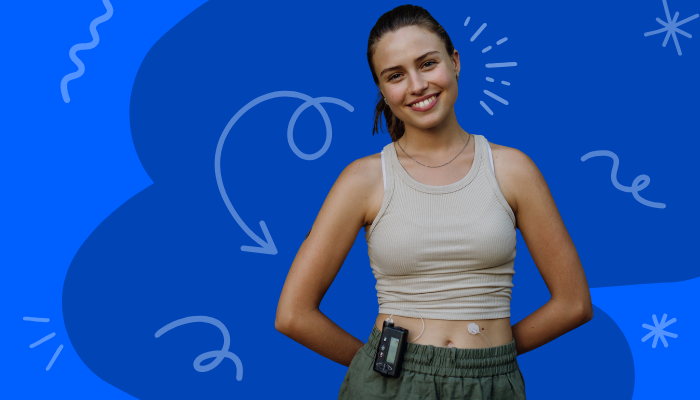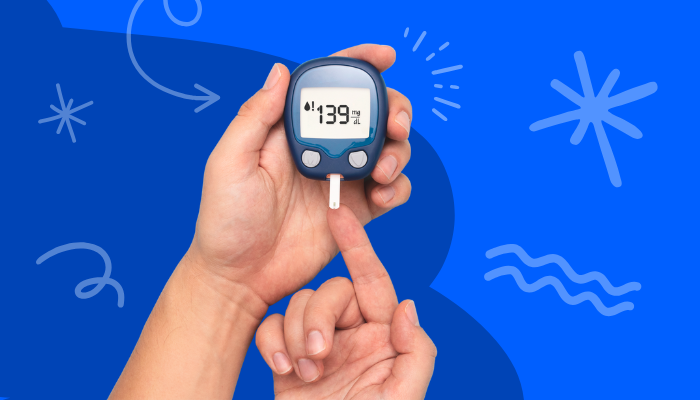Table of Contents
When you think of foods that raise your blood sugar, you will most likely think of sugar-filled pastries or drinks, but some regular foods, even those that do not taste “sweet”, can spike blood sugar levels. (1)
Nutritionists often look at a food's glycemic index (GI) to understand how it will affect blood sugar levels. GI is simply a measure of how quickly foods containing carbohydrates can increase blood sugar. (2) Eating too many foods with a high glycemic index (GI) may increase your risk of diabetes. (2)
Here are six foods that may throw your blood glucose levels off if not taken in moderation:
White grains
Food made from white grains, such as white bread, pasta, and white rice, has a high glycemic index. They are also highly refined because much of their fiber has been removed during processing. As a result, these foods are rapidly digested, causing a spike in blood sugar. (2)
Studies suggest that compared to white grains, whole grains lead to a slower rise in blood sugar. (3) Instead of white grains, you can opt for whole grains such as:
Whole-grain bread
Whole wheat pasta
Brown rice
Quinoa, amaranth
Buckwheat
Hulled Barley
It's important to add at this point that you don't have to completely cut off white grains from your diet if you have diabetes. You can pair them (in small amounts) with low-carb sources of fiber (cabbage, spinach, or asparagus), lean meats, and healthy fats.
Alternatively, researchers suggest eating protein and vegetables first before white grains like rice, which can help slow down the spike in glucose and keep your blood pressure steadier. (4)
Nevertheless, ensure you get a go-ahead from your doctor before adding white grains to your diet.
Starchy potatoes
While a good source of fiber, potatoes, particularly white potatoes, have a very high glycemic load. (5) According to the American Medical Association, a baked white potato can raise your blood sugar more than a glazed donut. (1) However, some studies suggest that methods such as baking or steaming potatoes can reduce their effect on blood sugar. (5)
If you still want to enjoy potatoes while reducing their glycemic load, researchers advise that you precook potatoes and eat them cold or reheated. (6) Pairing them with a side dish like beans or cauliflower rice may also lower the blood sugar spike. (1)
Plant-Based milk
Plant-based milk can be beneficial for people living with diabetes, but the processing they undergo often alters the overall quality.
For example, researchers at Harvard found that some sugars were created during the processing of oats to oat milk, and the newly made oat milk had twice the amount of carbs. (7) Similarly, rice milk also contains higher overall carbohydrate content than other plant-based milks. (8)
Instead of oat milk or rice milk, you can consider using unsweetened almond milk or soy milk, which is lower in carbs. (8) However, always check the label for any added sugars.
Dried fruit
Sadly, dried fruits like raisins may be just as bad for blood sugar as chocolate chips; in fact, raisins have more grams of carbs. While raisins are healthy in an overall sense, they spike the blood sugar so quickly.
If you must add dried fruits to your meals, use them in small amounts and pair with a healthy source of fat, protein, or fiber to help slow their absorption and prevent sugar spikes. Only purchase dried fruits with zero added sugars.
Alternatively, consider using dried prunes if you have diabetes. They have a low glycemic index and high fiber, so they don't cause a rapid increase in blood sugar levels. Still, only eat in moderation as prunes still contain natural sugars.
Instant oatmeal
Oatmeal is a good source of fiber and protein, but one cup of oatmeal contains about 27g of carbs, even without any added sweetener. Studies suggest that the carb content in oatmeal ranges from 51% to 65%. (9)
Instant oats are more processed, so their starches easily break down, which makes them spike blood sugar faster. The best type of oat for people living with diabetes is one that has been less processed, like steel-cut oats. (10)
To reduce the spikes that come from eating oatmeal (instant or rolled oats), you can also pair them with proteins and only choose products with zero added sugar.
Bananas and grapes
Fruits are good sources of fiber and antioxidants; however, they have to be consumed in moderation in people living with diabetes.
Grapes can rapidly raise your blood sugar levels, as they are high in glucose and fructose, which are quickly absorbed by the body. Just one half-cup of grapes contains about 15 g of carbs. (11)
Bananas, especially those that are ripe, will cause your blood sugar to rise faster than unripe green bananas. (12) This is because yellow or ripe bananas contain more sugar and less resistant starch than unripe ones. On average, a medium banana contains about 15 g of sugar. While you can enjoy bananas if you have diabetes, stick to green bananas in small portions.
Bottom line
When you understand how certain foods affect your blood glucose, you can take steps that keep your sugar level within the right range.
There's no single diet that you have to stick to, as people's bodies respond differently to different food types. A continuous glucose monitor (CGM) helps you understand how a food spikes your glucose in real time, allowing you to make a more informed decision.
Dexcom G7 CGM System

$ 161.99
$ 205.99
The Dexcom G7 Continuous Glucose Monitoring System (CGM) is a comprehensive system that has changed the way individuals living with diabetes have monitored and maintained their blood glucose levels. Dexcom G7 is for patients two years and older with any type… read more
FAQs
Do only sweet-tasting foods spike blood sugar?
No. When you think of foods that raise your blood sugar, you will most likely think of sugar-filled pastries or drinks, but some regular foods, even those that do not taste “sweet”, can spike blood sugar levels.
What determines a food that spikes blood sugar?
Nutritionists often look at a food's glycemic index (GI) to understand how it will affect blood sugar levels. GI is simply a measure of how quickly foods containing carbohydrates can increase blood sugar.
What are some foods that may spike my blood sugar?
Examples of foods that may spike your blood sugar include white grains, starchy potatoes, plant-based milk, instant oatmeal, bananas, and grapes.
What are some foods that lead to a slower rise in blood sugar?
Examples of foods that lead to a slower rise in blood sugar include whole-grain bread, whole wheat pasta, brown rice, quinoa, amaranth, buckwheat, hulled barley and dried prunes.
Sources
American Medical Association. Foods that spike a patient’s blood glucose are not what you think.
MedlinePlus. Glycemic index and diabetes.
Musa-Veloso K, Poon T, Harkness LS, O'Shea M, Chu Y. The effects of whole-grain compared with refined wheat, rice, and rye on the postprandial blood glucose response: a systematic review and meta-analysis of randomized controlled trials. Am J Clin Nutr. 2018;108(4):759-774. doi:10.1093/ajcn/nqy112
UCLA Health. Eating in certain order helps control blood glucose.
Sagili VS, Chakrabarti P, Jayanty S, Kardile H, Sathuvalli V. The Glycemic Index and Human Health with an Emphasis on Potatoes. Foods. 2022;11(15):2302. doi:10.3390/foods11152302
Fernandes G, et al. Glycemic index of potatoes commonly consumed in North America. J Am Diet Assoc. 2005;105(4):557-562.
Harvard T.H. Chan School of Public Health. Milk.
American Medical Association. Moove Over Cow's Milk.
Zhang K, Dong R, Hu X, Ren C, Li Y. Oat-Based Foods: Chemical Constituents, Glycemic Index, and the Effect of Processing. Foods. 2021;10(6):1304. doi:10.3390/foods10061304
UMass Chan Medical School. Why Steel Cut Oats?
U.S. Department of Agriculture. Grapes, red or green (European type, such as Thompson seedless), raw.
Falcomer AL, Riquette RFR, de Lima BR, Ginani VC, Zandonadi RP. Health Benefits of Green Banana Consumption: A Systematic Review. Nutrients. 2019;11(6):1222. doi:10.3390/nu11061222







